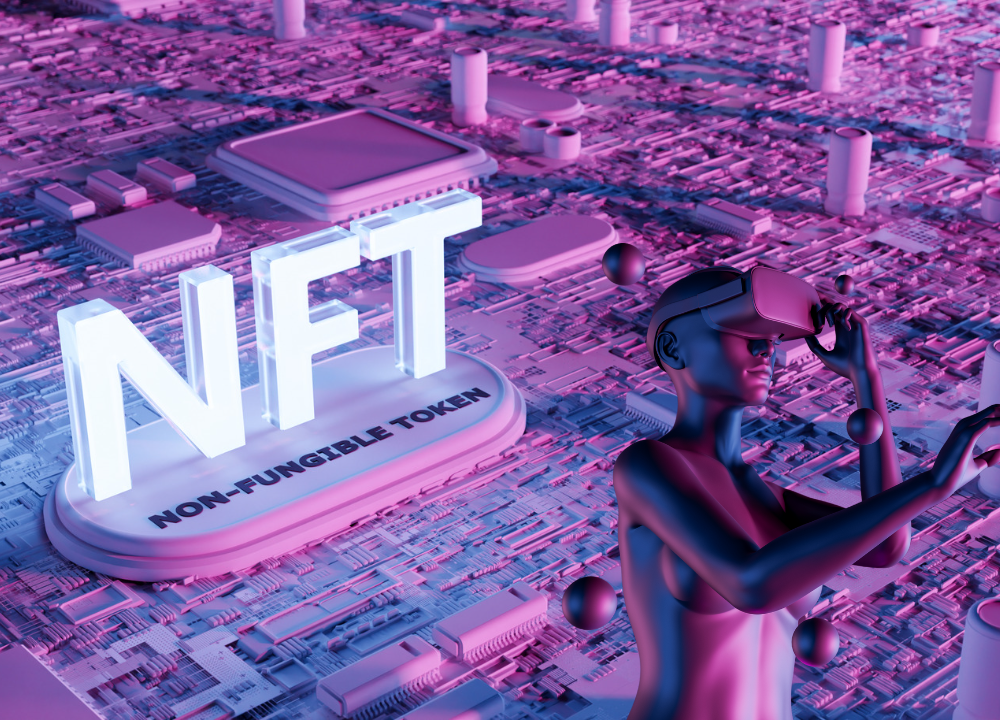The rise of blockchain technology has brought about a new era of digital ownership with the advent of Non-Fungible Tokens (NFTs). NFTs are unique digital assets stored on a blockchain, making them tamper-proof and easily verifiable. They have recently gained popularity, with some NFTs selling for millions of dollars. NFTs can be used to represent anything from artwork to virtual real estate. They offer a new way for creators to monetize their work and for collectors to own unique digital art pieces.
In this blog post, we will explore the potential of NFTs in the art world and their implications for digital ownership and the broader economy. We will also discuss the challenges and criticisms surrounding NFTs, such as their environmental impact and the potential for scams and fraud.
The Potential of NFTs in the Art World
One of the most exciting applications of NFTs is in the art world. NFTs offers a new way for artists to monetize their work and for collectors to own unique digital art pieces. Unlike traditional artwork, which is physical and can only be owned by one person at a time, NFTs are digital. Multiple people can hold them at once.
This opens up a whole new world of possibilities for artists, who can create digital art that can be easily shared and sold online. With NFTs, artists can create unique, one-of-a-kind pieces of digital art that collectors can own and display in their digital collections. This has already led to some high-profile sales, with one NFT selling for a record-breaking $69 million at a Christie’s auction in March 2021.
NFTs also offers a new way for artists to maintain control over their work. With traditional art, the artist loses control over it once it is sold. With NFTs, however, the artist can embed specific rules and conditions into the token, such as limiting the number of times it can be resold or requiring that the artist receive a percentage of each sale.
Implications for Digital Ownership
NFTs have significant implications for digital ownership, as they offer a new way for people to own and control digital assets. Previously, proving ownership of digital assets took a lot, as they could be easily duplicated or stolen. NFTs are stored on a blockchain, making them tamper-proof and easily verifiable.
This has significant implications for industries beyond the art world. For example, NFTs could represent virtual real estate in online games, allowing players to own and trade virtual property. They could also mean other digital assets, such as music and video content, giving creators a new way to monetize their work and giving consumers a way to own and collect unique pieces of digital media.
Broader Economic Implications
The rise of NFTs also has broader economic implications. NFTs offers a new way for creators to monetize their work, which could lead to new business models and revenue streams. For example, an artist could create a series of NFTs representing different parts of a more considerable work and sell them individually to collectors. This could create a new market for digital art, leading to increased demand and higher prices.
NFTs could also lead to new opportunities for investment. Just as people invest in traditional art, people could invest in NFTs, buying and holding them in the hopes that their value will increase over time. This could create a new asset class with unique risks and opportunities.
Challenges and Criticisms
Despite the potential of NFTs, some challenges and criticisms need to be addressed. One primary concern is the environmental impact of NFTs. Creating and verifying NFTs requires a significant amount of energy, which has led to criticism of the technology as being environmentally unsustainable. This has led some artists and creators to question whether NFTs are a responsible way to monetize their work.
Another concern is the potential for scams and fraud. Because NFTs are a new technology, there is still a lot of uncertainty and confusion around how they work and how they should be valued. This has led to some high-profile cases of fraud and manipulation, which have raised concerns about the reliability of the technology and the potential for exploitation.
Finally, there are also concerns about the accessibility of NFTs. Because they are digital assets that require a certain level of technical knowledge to understand and use, some people may need to be included in the market for NFTs. This could lead to a widening gap between those who can participate in the market and those who are not.
Conclusion
Non-Fungible Tokens (NFTs) are a new and exciting technology that has the potential to revolutionize digital ownership and monetization. They offer a new way for creators to monetize their work and for collectors to own unique digital art pieces. They also have significant implications for industries beyond art, such as gaming, music, and video content.
However, some challenges and criticisms need to be addressed, such as the environmental impact of NFTs, the potential for scams and fraud, and the accessibility of the technology. As with any new technology, there is still a lot of uncertainty and confusion around how NFTs work and how they should be valued.
Overall, NFTs represent an exciting opportunity for innovation and growth. Still, we must approach them with caution and care, considering both the potential benefits and risks. As the market for NFTs continues to evolve, we expect to see new business models, investment opportunities, and creative possibilities emerge. Still, we must also be vigilant in addressing the challenges and criticisms that come with this new technology.


